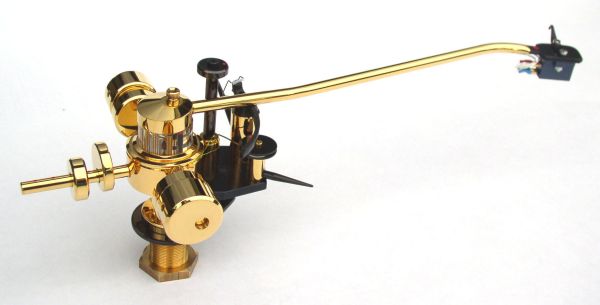
While playing a record, the tonearm must be able to move both horizontally and vertically – horizontally as the cartridge moves towards the center of the record, and vertically to allow for imperfections (warps and bumps) in the record.
At very low frequencies the modulation in the record is only horizontal. If the tonearm can move too freely horizontally the low frequency motion of the stylus will be transferred to the cartridge itself, while the cantilever of the cartridge almost does not move, and thus only a weak signal is induced.
To have excellent audio reproduction at these low frequencies, the horizontal movement of the tonearm must be restricted – but to ensure perfect tracking this must be achieved without a similar restriction of the vertical movement. This “anisotropic” principle – different characteristics for different directions of movement – is the essence of the MØRCH DP-8.
The DP-8 has a flywheel shaped central body and two weights on the sides to stabilize the movement of the tonearm horizontally. Thus, as the cartridge moves towards the center of the record, it can only follow the average location of the groove. It cannot follow the modulation, which is all transferred to the cantilever. This means that all the recorded bass, even the very low end of the range, is reproduced with full amplitude and dynamics.
|